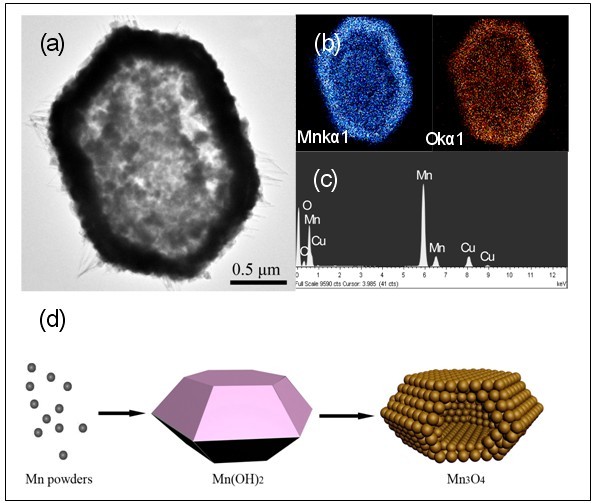The fabrication of hollow nanostructures with utilization of Kirkendall effect has recently been a hot research topic. In experiment, it is generally hard to obtain hollow structure with diameters over 500 nm. However, structures with larger hollow center may find potential applications on the drug delivery and releasement, which can greatly enhance its capacities. Recently, researchers have successfully fabricated manganese oxides (Mn3O4, Mn5O8, Mn2O3) nanostructures with large hollow structure by hydrothermal reaction. Such hollow structures have been ascribed to a structure shrinkage assisted Kirkendall effect. In the early stage of the reaction, metal manganese transformed to the Mn(OH)2 tetrakaidecahedron under the hydrothermal condition. While the filtration in the atmosphere, the Mn(OH)2 tetrakaidecahedron was oxidized to the Mn3O4 hollow-tetrakaidecahedron structures basing on the Kirkendall effect. It should be noted that the structure shrinkage happened while the transition from Mn(OH)2 to Mn3O4 (about 42% volume water will be released). Such structure shrinkage accelerated the diffusion speed and prolonged the free path lengh of Mn element, making the Kirkendall working in a very large space. The researchers also performed the investigation on the magnetic and electrochemistry. These results indicate that such materials have great potential application on the super capacitor, drug delivery and slow releasing, environmental treatment and catalisis. The corresponded work has been published on the CrystEngComm(CrystEngComm, 2011, 13, 4915-4920).

TEM image of the hollow Mn3O4 tetrakaidecahedron (a), energy dispersive spectroscopy (b and C), and the schematic diagram of the formation mechanism (d)。